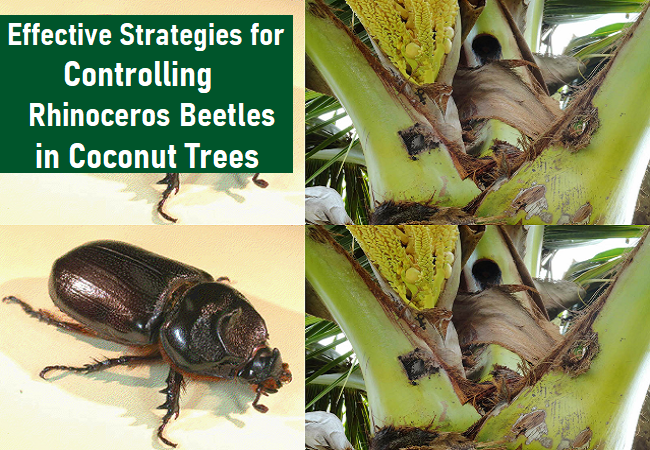What are the methods to control rhinoceros beetles in coconut trees?
Controlling rhinoceros beetles in coconut trees is crucial to safeguard the health and productivity of the coconut palms. Rhinoceros beetles, such as the Oryctes rhinoceros species, are a common pest that can cause significant damage to coconut trees, both in their larval and adult stages. Here are some methods to effectively control rhinoceros beetles:
-
Trapping: One of the effective ways to control adult rhinoceros beetles is by setting up traps. These traps can be baited with materials that attract the beetles, such as fermented sugarcane or fruit. When the beetles are lured to the traps, they get captured, reducing the beetle population in the vicinity of coconut trees.
-
Biological Control: Introducing natural enemies of rhinoceros beetles can be an eco-friendly method of control. Certain species of parasitic wasps and nematodes are known to prey upon rhinoceros beetle larvae, helping to reduce their numbers.
-
Chemical Control: Pesticides can be used to control adult beetles and their larvae. Insecticides may be applied to the coconut tree crowns, where adult beetles feed and lay eggs. However, the use of pesticides should be done with caution to avoid harm to beneficial insects and the environment.
-
Pruning: Regularly pruning the coconut palms can help remove breeding sites for the beetles. Dead fronds and decaying material provide suitable environments for the beetles to lay eggs, so their removal can disrupt their life cycle.
-
Physical Barriers: Installing physical barriers around the base of the coconut tree can prevent adult beetles from climbing up and laying eggs. These barriers can be made of materials like burlap or metal.
-
Hygiene and Sanitation: Maintaining good hygiene around coconut plantations is essential. Clearing away fallen and rotting fruits and fronds can help reduce the attractiveness of the area to rhinoceros beetles.
-
Early Detection: Regular monitoring and early detection of rhinoceros beetle infestations are crucial. Prompt action can prevent the problem from escalating and becoming harder to manage.
-
Quarantine Measures: Implementing quarantine measures can help prevent the introduction and spread of rhinoceros beetles to new areas. Restricting the movement of infested plant materials can help contain the problem.
It is essential to adopt an integrated pest management (IPM) approach, combining multiple methods, to control rhinoceros beetles effectively. IPM focuses on sustainable and environmentally friendly practices to minimize the use of chemicals while ensuring the long-term health of coconut trees and the ecosystem they thrive in. Local agricultural authorities and experts can provide specific guidance on the most appropriate control methods for a particular region.

